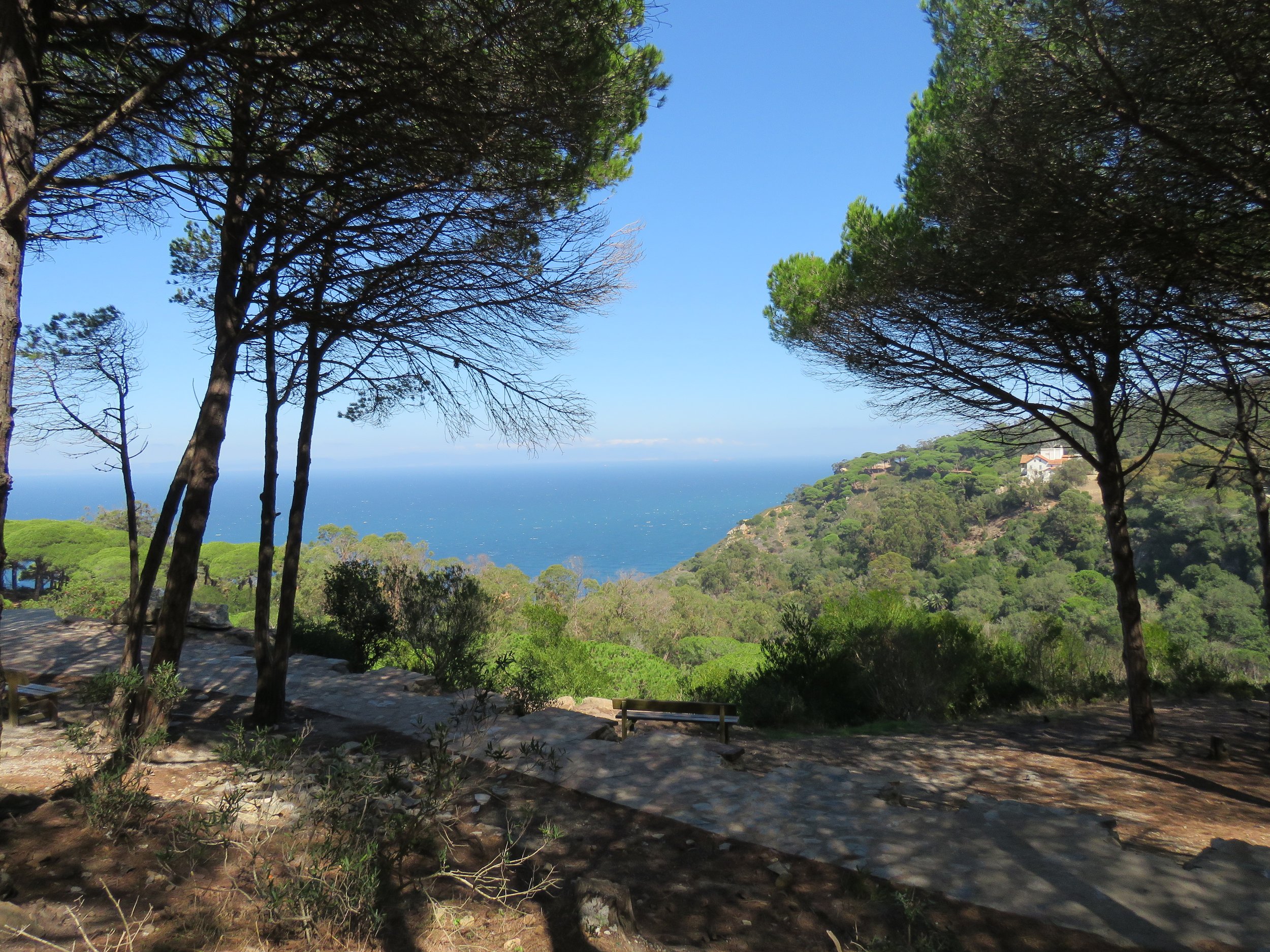Rif Mountains, en route to Tangier.
Tangier
Whenever I heard that name, I used to picture swashbuckling pirates… Perhaps I had seen paintings by famous Dutch painters from the Middle Ages. Or perhaps I read too many books?
But Tangier does have a turbulent past. One that did, indeed, included pirates. Founded as Phoenician city, between the 10th and 8th century BCE, it’s been under Roman rule and has been part of the Byzantine Empire. During the 7th century, Arabs swept across North Africa, converting the locals to the religion of Islam. It has been under Portuguese, Spanish and British rule. It also has been an independent city state. But since 1956 is has been part of Morocco.
Across the Strait of Gibraltar is Spain.
Tangier’s location at the Atlantic entrance to the Mediterranean Sea gave it strategic significance. It was a haven for pirates preying on international trade. I love learning about word origins and finding out that Berbers lived in all coastal areas of northern Africa, thus it was called the Barbary Coast. And citizens in the area became known as Barbarians…
Somehow I had imagined Tangier to be a dirty, busy port city but - on the contrary - we drove through a beautiful sparkling white city. First we went to the coast at Cape Spartel where the Atlantic Ocean and the Mediterranean Sea crash into each other, literally. Wide, tree lined boulevards run along the blue sea, lined with mansions. Movie stars, ministers, even a Middle Eastern king have homes here.
Down there is Hercules’ Cave!
We strolled through a beautiful park and had a picnic with views of the hills and the sea. Then we drove to sea level to walk along the beach. We looked out across the Strait of Gibraltar to see The Rock on the other side: Europe! A ferry can take you and your car from Spain so you can drive from Europe to Africa.
There’s a famous cave here - Hercules’ Cave. Legend has it that Hercules rested in this cave after separating the European and African continents. Apparently he placed one pillar on each side of the divide. On the European side, this is the Rock of Gibraltar. Where the African pillar is not quite clear…
The myth continues to tell that Hercules (or in Greek ‘Heracles’) slept in the cave on his way to steal three golden apples from the Garden of the Hesperides. Stealing the apples, which were believed to confer immortality, was the 11th of the ’12 Labors of Hercules.’ The power of stories!
Regardless, you can stroll past the stalagmites and stalactites and dwell in this ancient cave long the shore of northern Africa.
The main square of Tangier’s medina.
We spent much of the evening strolling through the crowded medina, watching locals sip mint tea and coffee. I read that The Beatles sat here, just like us. So did Sean Connery and the Rolling Stones - spending the evening in Cafe Hafa. Hanna and I sat in the main square and loved observing daily life as business men, mothers with strollers, vendors and tourists passed by. After the sun set, turning the white city golden, we enjoyed a leisurely dinner outside in one of the bustling medina streets. Then we strolled narrow streets of the old fort.
I noticed a cannon pointing out to sea. Those swashbuckling pirates got an earful if they tried to enter Tangier!
We encountered no such violence and, in fact, commented on the fact that two women alone were able to walk throughout the medina late at night without any sign of danger.
When we came around a corner, at about 11 o’clock at night, we witnessed a magical sight: a huge shrub with cascading white flowers - like white trumpets - spread a heavenly fragrance that hung heavy in the air. I had never seen such an amazing bush. And no wonder - I later learned that the Burgmansia, or Angel Trumpet, only blooms at night. Surrounded by the sweet smell, under a full moon, the stone walls of Tangier’s kasbah, echoing stories of a long and tumultuous history, formed the perfect setting for an Arabian night.
RESOURCES:
https://www.visitmorocco.com/en/travel/tangier
https://moroccoam2023.ma/discover-morocco/un-endroit-unique/tanger/
BOOKS - click and scroll down to Morocco










